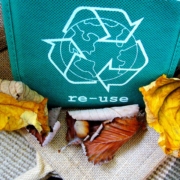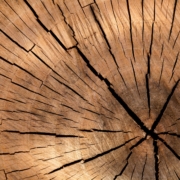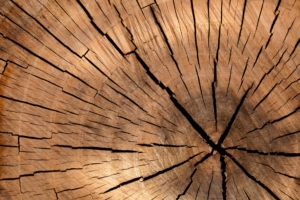Sustainable Forestry
Sustainable forest management aims to ensure that there is a continuous supply of timber and non-timber forest products. Sustainability also means preserving the processes and structures that create, support, and sustain forests by integrating conservation and development goals. To accomplish these goals, sustainable forest management combines principles from forestry, agriculture, environmental protection, economics, ecology, and sociology.
The Role of Sustainable Forest Management
The role of sustainable forest management is to ensure that forests continue to provide the ecosystem processes that society depends upon. Forests are important for a wide variety of reasons: they prevent soil erosion, regulate water resources, purify the air, and protect biodiversity (by providing wildlife habitat).
Moreover, they have an enormous capacity for carbon storage. Currently, about 350 billion tons of carbon are stored in the world’s forests, which is about 65% of the global total. As an alternative to deforestation, sustainable forest management allows for harvesting timber while maintaining its ecological, economic, and social functions.
Forest Management
The term “forest management” refers to a range of activities required to care for the forest from conception to harvest. These activities include planning the harvesting schedule, silviculture, and road building. Forest management requires up-to-date information about the forest’s standing stock of timber and non-timber products such as herbs, resins, fibers, and its connectivity with other forests to ensure a continuous flow of products into the marketplace. To maintain these connections, a clear understanding of the forest needs to be developed; this requires an analysis of how the forest functions.
Sustainability Indicators
Indicators are used to measure changes in forests and determine whether they are being managed sustainably. Changes can be measured by collecting data on indicators such as carbon storage or biodiversity over time. These indicators are vital for measuring progress toward sustainability goals. The key sustainable forest management indicator is the change in biomass or carbon storage over time.
Researchers measure carbon storage using above-ground biomass combined with estimates of deadwood densities at different ages. This approach allows them to calculate the amount of total stored carbon in a forest, which varies with tree size and age class distribution within a forest.
Sometimes, a change in carbon storage is also viewed as an indicator of governmental policies because ‘how’ a society uses its forests impacts the total amount of carbon stored. For example, if deforestation increases while reforestation and afforestation decrease this may indicate that it will not be easy for countries to achieve their greenhouse gas emission reduction targets under the Kyoto Protocol.
Greenhouse Gas Emissions
Forests play an integral role in mitigating global warming by sequestering large amounts of atmospheric carbon and increasing biodiversity, protecting watersheds and reducing erosion. Because forests account for about 46% of all terrestrial photosynthesis they remove significant amounts of atmospheric carbon dioxide (CO2).
Trees use CO2 from the atmosphere in photosynthesis, converting it into wood and leaves. When the trees die, decomposition returns this carbon to the atmosphere where it is available for re-uptake by plants during subsequent growth. Reducing forest cover and biodiversity will result in lower levels of stored carbon.
Carbon Sequestration Capacity
Forests can sequester more than 1 million metric tons of carbon per square kilometer (km2) over long periods (100 years or more), with the amount varying depending on factors such as climate, soil conditions, and tree diversity. The Taiga, for example, stores the most carbon per unit area. However, tropical rain forests may contain more carbon overall because they tend to exhibit more biodiversity and density than forests in other parts of the world.
The primary aim of sustainable forest management is to increase biomass through active management rather than natural processes such as fire or disease. Depending on the type of land-use management, a country can achieve either negative net emissions from its forestry sector by slashing tree numbers and allowing forests to mature until harvesting starts some years later, or positive net emissions by increasing levels of biomass through practices like reforestation. In fact, afforestation has become one of the most successful tools in reducing net emission levels globally.
Under the Kyoto Protocol, a country accounts for carbon sequestered from its forests within its national greenhouse gas emissions account. This calculation is based on data submitted by each country to the United Nations Framework Convention on Climate Change (UNFCCC).
Carbon Emissions Reductions
As well as storing carbon, forests also reduce greenhouse gas concentration by acting as a sink for atmospheric CO2 emissions. The most effective way to reduce net emissions from the forestry sector is to ensure that trees are planted faster than they are being cut down, at least until this balance is achieved. Increased tree planting will result in accompanying social and environmental benefits like maintaining biodiversity and increasing water quality.
Growth of Forests on Former Croplands
Planting forests on cropland is one way to combat climate change. Estimates indicate that if 10% of the world’s arable land were converted back into forests. This would be equivalent to removing half of all cars from roads or closing down 300 coal-fired power stations.
Similarly, successful governmental policies can be adopted around the world to help combat climate change afforestation, such as offering tax breaks to organizations that plant trees or providing subsidies for renewable energy.
Challenges in Sustainable Forest Management
- Human activities impair the ability of forests to sequester carbon by either causing deforestation or altering the species makeup of existing forests. For example, if native species are replaced with non-native ones while replanting efforts are in place, then there will not be as many environmental benefits because the new plants do not support wildlife. These negative impacts can only be avoided through better education and stricter governmental policies.
- Effective management of forests requires an understanding of the area’s history, as well as current policies that affect forest use. For example, if a country has under-reported past deforestation amounts and reforestation efforts are not successful, then carbon levels will not decrease and greenhouse gas levels will increase. Countries should be diligent in reporting accurate information on deforestation rates so that proper corrective action can be taken.
- The success of sustainable forestry is largely dependent on the overall goals of both environmental protection and human economic entitlement. This approach to forest management can only work if all parties are committed to protecting the environment while also ensuring their economic interests are met.
Sustainable forest management employs the use of sustainable forest management indicators, such as monitoring biodiversity or measuring changes in carbon storage. Sustainable forest management is not only a set of techniques that can be applied to forests but also an ideology that encompasses all aspects of political, social, and economic life.





